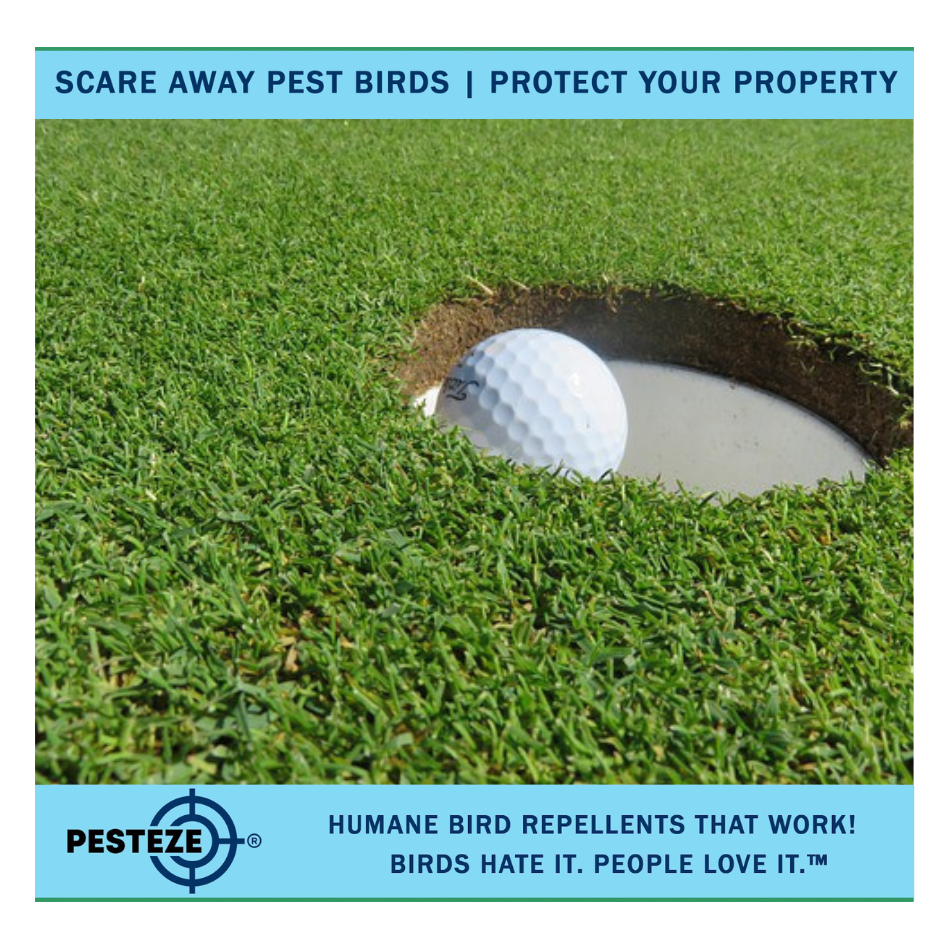HOW TO DETER BIRDS FROM GOLF COURSES: PROTECT THE GREENS WITH SMART SOLUTIONS!

HOW TO DETER BIRDS FROM GOLF COURSES: PROTECT THE GREENS WITH SMART SOLUTIONS!
- Tags: Bird Control Guide
- Maanas Mehta



Birds can disrupt golf courses by damaging greens and creating messes. Discover how to implement effective bird deterrent strategies that maintain the course’s aesthetics while keeping birds at bay.
Birds can cause significant issues on golf courses, from pecking at the greens to leaving droppings on fairways and near clubhouses. To ensure that your course remains pristine and undisturbed by avian visitors, it’s essential to implement effective bird deterrence methods that blend with the natural beauty of the course.
One of the most popular strategies for deterring birds on golf courses is the use of decoy predators. Birds are naturally afraid of larger animals like owls and hawks, so placing realistic predator decoys around the course can keep birds away. Position these decoys in areas where birds are commonly seen, such as around the greens, ponds, or near the clubhouse. To increase effectiveness, move the decoys periodically to prevent birds from becoming accustomed to them.
Another powerful tool is sound systems that broadcast bird distress calls or emit ultrasonic sounds that are unpleasant to birds. These sounds can deter birds from landing on the course, particularly in areas where they are most problematic, such as the fairways or putting greens. Since these devices are typically quiet to human ears, they provide a discreet way to manage bird activity without disrupting players.
Water management is key for courses with water hazards, as these areas often attract a variety of bird species. Installing motion-activated sprinklers near ponds or lakes can discourage birds from gathering. The sudden spray of water startles the birds, making them less likely to return. This solution is not only effective but also environmentally friendly, as it doesn’t harm the birds or the water features.
Using reflective objects can also help keep birds away. Reflective tape or mirrors hung in trees, around ponds, or near key areas of the course create flashes of light that birds find disorienting. This visual disturbance can be particularly useful in deterring birds from landing or nesting near the course.
For areas such as clubhouses, pavilions, or structures with ledges, bird spikes offer a practical solution. These spikes make it difficult for birds to perch, discouraging them from roosting on the building or nearby seating areas. The spikes are discreet and don’t interfere with the visual appeal of the course, while still effectively preventing birds from settling.
Lastly, consider natural landscaping as a preventative measure. By choosing plants that birds find unappealing—such as certain aromatic herbs or prickly shrubs—you can reduce the appeal of the course to birds. Integrating these bird-repelling plants into the landscaping around the course helps to naturally deter birds without the need for constant maintenance or additional devices. This approach maintains the beauty and aesthetics of the golf course while subtly discouraging birds from gathering.
By combining decoy predators, sound systems, water management techniques, reflective objects, bird spikes, and natural landscaping, you can effectively deter birds from disrupting your golf course. These methods will ensure that your course remains clean, undamaged, and enjoyable for golfers, while keeping bird-related issues to a minimum.
Comments 0